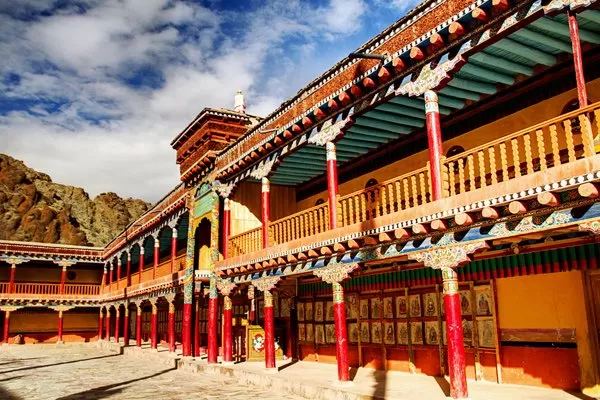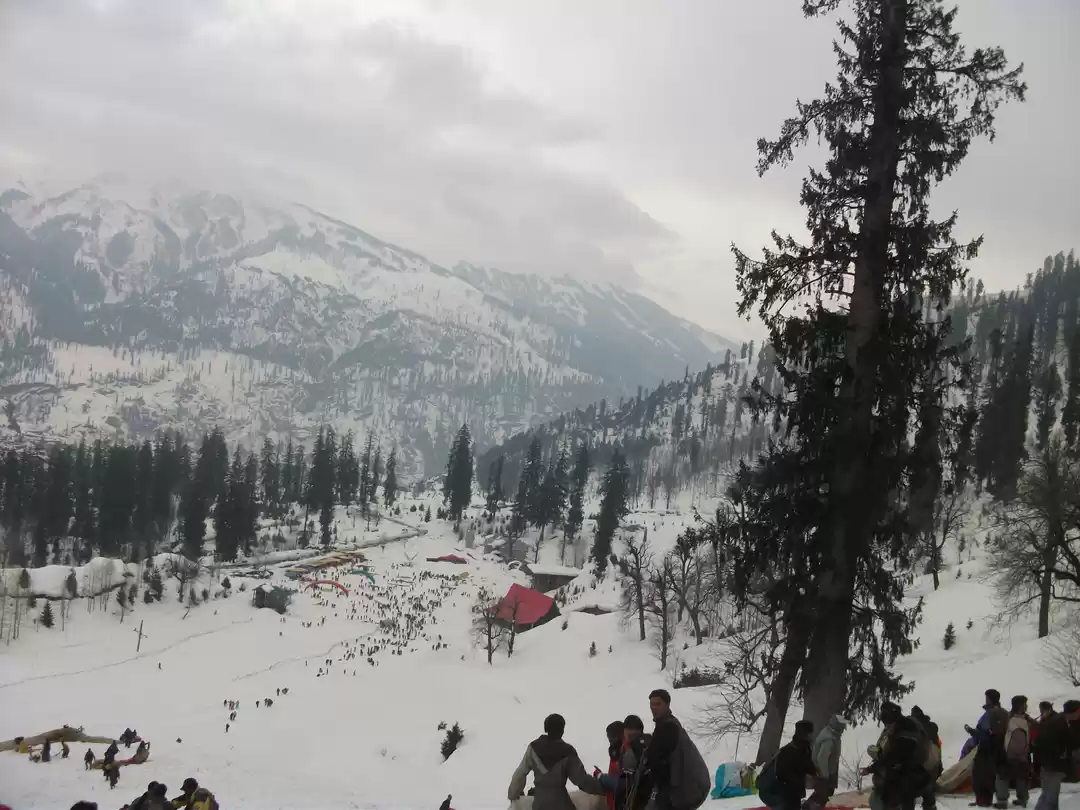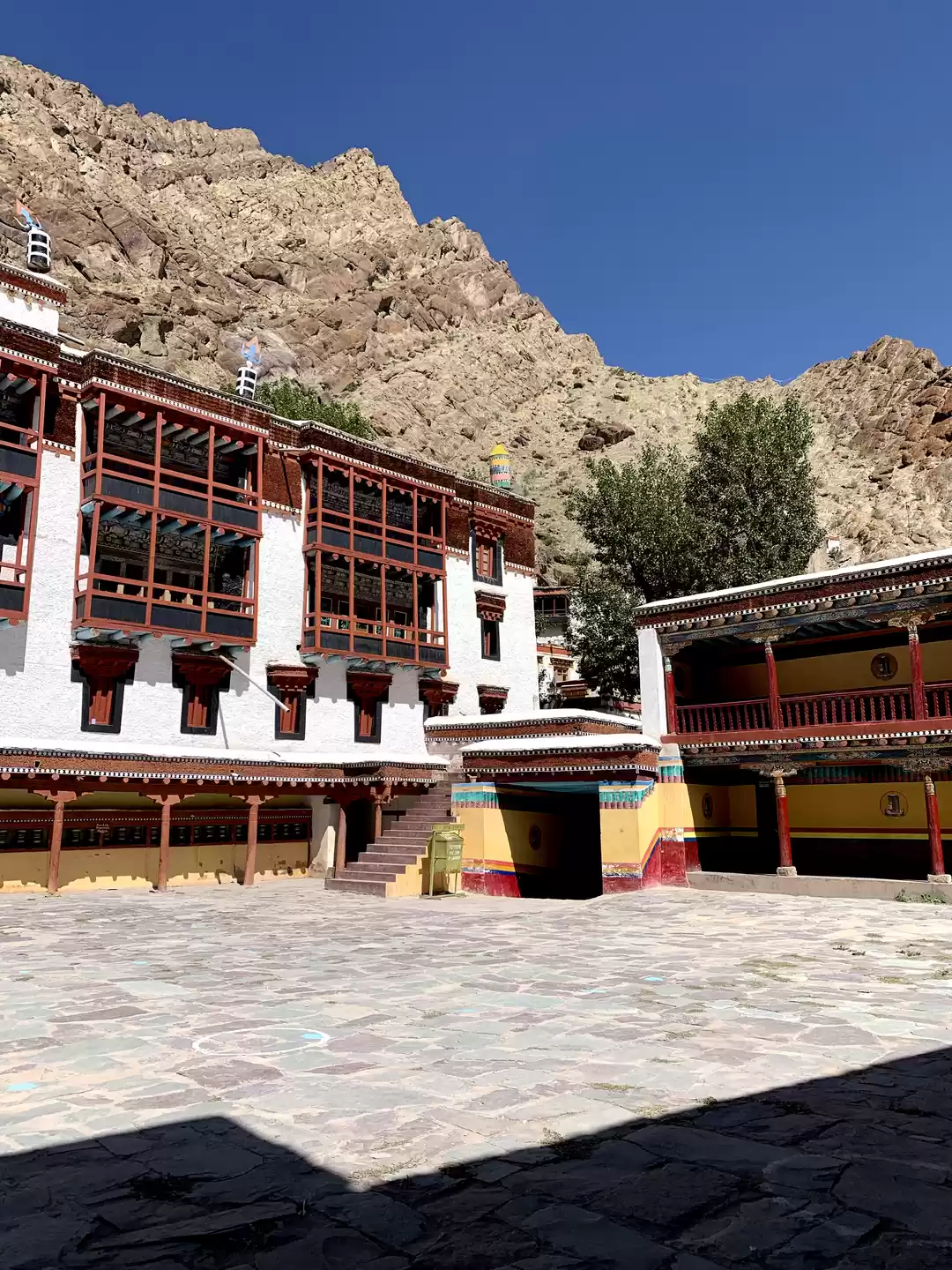Did you know that Hemis Monastery is the oldest and wealthiest monastery in Ladakh? It is also the largest and most famous monastery in the region, attracting thousands of visitors every year. Hemis Monastery is not only a place of worship, but also a treasure trove of art, culture, and history. It is home to the Hemis Festival, one of the most spectacular and colorful events in Ladakh. It is also surrounded by the Hemis National Park, one of the largest and most diverse wildlife sanctuaries in India.
If you are planning to visit Ladakh, you cannot afford to miss Hemis Monastery. It is a unique and unforgettable experience that will enrich your knowledge and appreciation of Buddhism and Ladakh. In this article, we will tell you everything you need to know about Hemis Monastery, its history, architecture, attractions, festival, and travel guide. Whether you are a spiritual seeker, a culture lover, or an adventure enthusiast, Hemis Monastery has something for everyone.
Hemis Monastery History

Hemis Monastery was founded in the 17th century by Stagsang Raspa Nawang Gyatso, who was invited by the king of Ladakh, Sengge Namgyal, to spread the teachings of the Drukpa Kagyu school of Tibetan Buddhism. The monastery was built on the site of an earlier monastery that dated back to the 11th century. Hemis Monastery became the main seat of the Drukpa Kagyu lineage in Ladakh, and received patronage and donations from the royal family and the local people. Hemis Monastery also became a center of learning and scholarship, producing many eminent masters and scholars.
According to one legend, Hemis Monastery is the hidden location of the mythical valley of Shambhala, where the future Buddha, Maitreya, is said to reside. According to another legend, Hemis Monastery was visited by Jesus Christ during his “lost years”, and that some of his teachings are preserved in the monastery’s library. Hemis Monastery also claims to have the reincarnation of the Dalai Lama, the spiritual leader of Tibetan Buddhism, among its monks.
Hemis Monastery Architecture
Hemis Monastery is a masterpiece of Ladakhi architecture, blending Tibetan and Indian influences. The monastery is built on a hillside, overlooking a valley and a stream. The monastery complex consists of several buildings, such as the main temple, the assembly hall, the courtyard, the museum, and the visitors’ gallery. The monastery is decorated with colorful prayer flags, stupas, statues, paintings, and thangkas, which are religious scroll paintings.
The main temple of Hemis Monastery is the most impressive and sacred part of the complex. It is also known as the Tshogkhang, or the sanctum sanctorum. The main temple houses a huge statue of Guru Padmasambhava, the founder of Tibetan Buddhism, who is also known as Guru Rinpoche, or the Precious Master.
The assembly hall of Hemis Monastery is also known as the Dukhang, or the main prayer hall. It is where the monks gather for daily prayers and rituals. The assembly hall is decorated with beautiful murals, depicting the life and teachings of Buddha, as well as scenes from the Hemis Festival.
The courtyard of Hemis Monastery is also known as the Chhamkhang, or the dance hall. It is where the Hemis Festival is celebrated every year, with masked dances and music. The courtyard is surrounded by a verandah, where the spectators can watch the performances. The courtyard also has a raised platform, where the sacred thangka of Guru Padmasambhava is displayed during the festival.
Hemis Monastery Attractions
Hemis Monastery is not only a place of worship, but also a place of wonder and delight. There are many attractions and highlights that make Hemis Monastery a must-visit destination for anyone who wants to explore the rich and ancient culture of Ladakh. Some of the main attractions and highlights of Hemis Monastery are:
1. Hemis Festival
Hemis Festival is one of the most spectacular and colorful events in Ladakh. It is celebrated every year in the month of June or July, on the 10th day of the Tibetan lunar calendar, which coincides with the birth anniversary of Guru Padmasambhava. Hemis Festival is a two-day celebration, featuring masked dances and music, performed by the monks of the monastery.
2. Hemis Museum
Hemis Museum is a treasure trove of art, culture, and history. It is where the monastery displays its priceless collection of artifacts, relics, and manuscripts. The museum has over 1500 items, including ancient scriptures, weapons, coins, ornaments, costumes, masks, musical instruments, and paintings. The museum is open from 8 am to 1 pm, and from 2 pm to 6 pm, every day. The entry fee is Rs. 50 per person, and Rs. 100 for a camera.
3. Hemis National Park
Hemis National Park is one of the largest and most diverse wildlife sanctuaries in India. It is located around the Hemis Monastery, and covers an area of 4400 sq km. Hemis National Park is home to a variety of flora and fauna, including some endangered and rare species, such as the snow leopard, the Tibetan wolf, the red fox, the Himalayan brown bear, the ibex, the bharal, the marmot, and the golden eagle.
Hemis Monastery Travel Guide
Hemis Monastery is a place that you cannot afford to miss when you visit Ladakh. It is a place that will enrich your knowledge and appreciation of Buddhism and Ladakh, and will leave you with unforgettable memories and experiences. Here are some practical and helpful tips on how to plan and prepare for your trip to Hemis Monastery:
Best Time to Visit: The best time to visit Hemis Monastery is from May to September, when the weather is pleasant and the roads are accessible and the monastery is open. This is also the time when the Hemis Festival is celebrated, which is a once-in-a-lifetime opportunity to witness the masked dances and music of the monastery. However, this is also the peak season, when the monastery is crowded and the prices are high.
How to Reach: Hemis Monastery is located about 45 km from Leh, the capital of Ladakh. The easiest and fastest way to reach Hemis Monastery is by road, either by taxi or by bus. You can hire a taxi from Leh, which will cost you around Rs. 1500 to Rs. 2000 for a round trip.
You can also take a bus from Leh, which will cost you around Rs. 50 to Rs. 100 per person for a one-way trip. The bus service is available only from May to September, and the frequency and timings may vary depending on the season and demand.
You can trek from Spituk, which is about 18 km from Leh, or from Stok, which is about 15 km from Leh. The trek takes about 3 to 4 days, and passes through some of the most scenic and remote villages and valleys of Ladakh. You will need to hire a guide and a porter, and carry your own camping equipment and food.
Where to Stay: Hemis Monastery does not have any accommodation facilities for visitors, except for a few guest rooms for VIPs and dignitaries. However, there are many options for staying near Hemis Monastery, ranging from budget to luxury. Some of the top hotels near Hemis Monastery are Hemis View Guest House, Hemis Eco Resort and Hemis Monastery Camp.
What to See: Hemis Monastery is a place that will captivate your senses and your soul. There are many things to see and do in and around Hemis Monastery, such as:
1. Explore the Monastery: Hemis Monastery is a place of worship, art, and history. You can spend hours exploring the various buildings, halls, temples, and galleries of the monastery, admiring the architecture, the decorations, and the artifacts. You can also witness the daily prayers and rituals of the monks, and listen to their chants and hymns.
2. Attend the Hemis Festival: Hemis Festival is one of the most spectacular and colorful events in Ladakh. It is celebrated every year in the month of June or July, on the 10th day of the Tibetan lunar calendar, which coincides with the birth anniversary of Guru Padmasambhava. Hemis Festival is a two-day celebration, featuring masked dances and music, performed by the monks of the monastery. The dances depict the victory of good over evil, and the teachings of Guru Padmasambhava. The masks represent various deities, demons, animals, and characters from Buddhist mythology.
3. Visit the Hemis National Park: Hemis National Park is one of the largest and most diverse wildlife sanctuaries in India. It is located around the Hemis Monastery, and covers an area of 4400 sq km. Hemis National Park is home to a variety of flora and fauna, including some endangered and rare species, such as the snow leopard, the Tibetan wolf, the red fox, the Himalayan brown bear, the ibex, the bharal, the marmot, and the golden eagle. Hemis National Park is also a paradise for birdwatchers, as it has over 200 species of birds, such as the Himalayan griffon, the lammergeier, the Tibetan snowcock, the chukar, and the fire-fronted serin. Hemis National Park is a great place to enjoy the natural beauty and biodiversity of Ladakh, and to spot some of the most elusive and majestic animals in the world.
Hemis Monastery is a place that you cannot afford to miss when you visit Ladakh. It is a place that will enrich your knowledge and appreciation of Buddhism and Ladakh, and will leave you with unforgettable memories and experiences. Hemis Monastery is not only a place of worship, but also a place of wonder and delight. It is a place where you can explore the history, architecture, and culture of the oldest and wealthiest monastery in Ladakh. It is a place where you can witness the Hemis Festival, one of the most spectacular and colorful events in Ladakh. It is a place where you can visit the Hemis National Park, one of the largest and most diverse wildlife sanctuaries in India.

















































